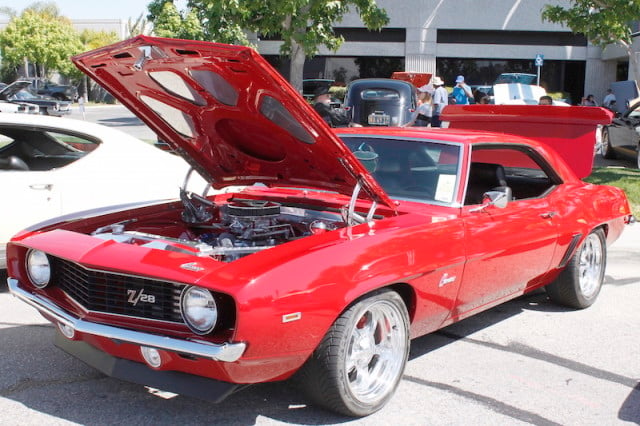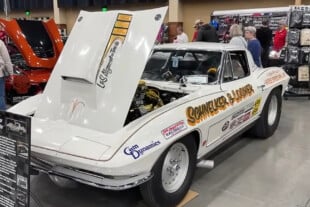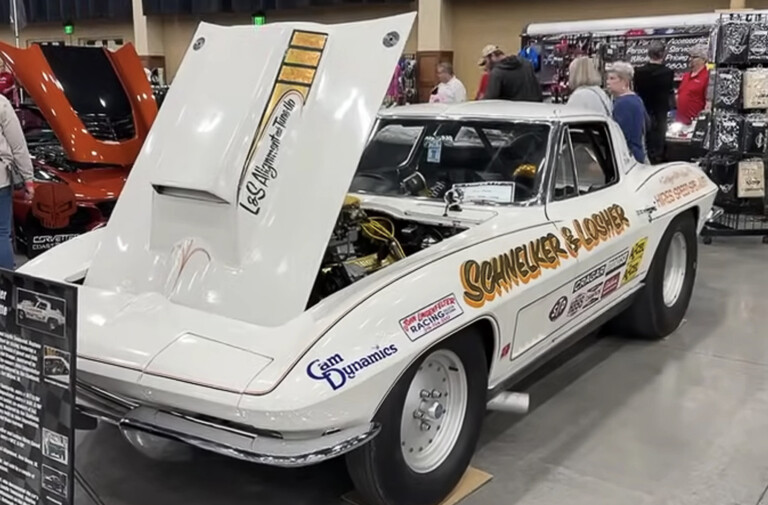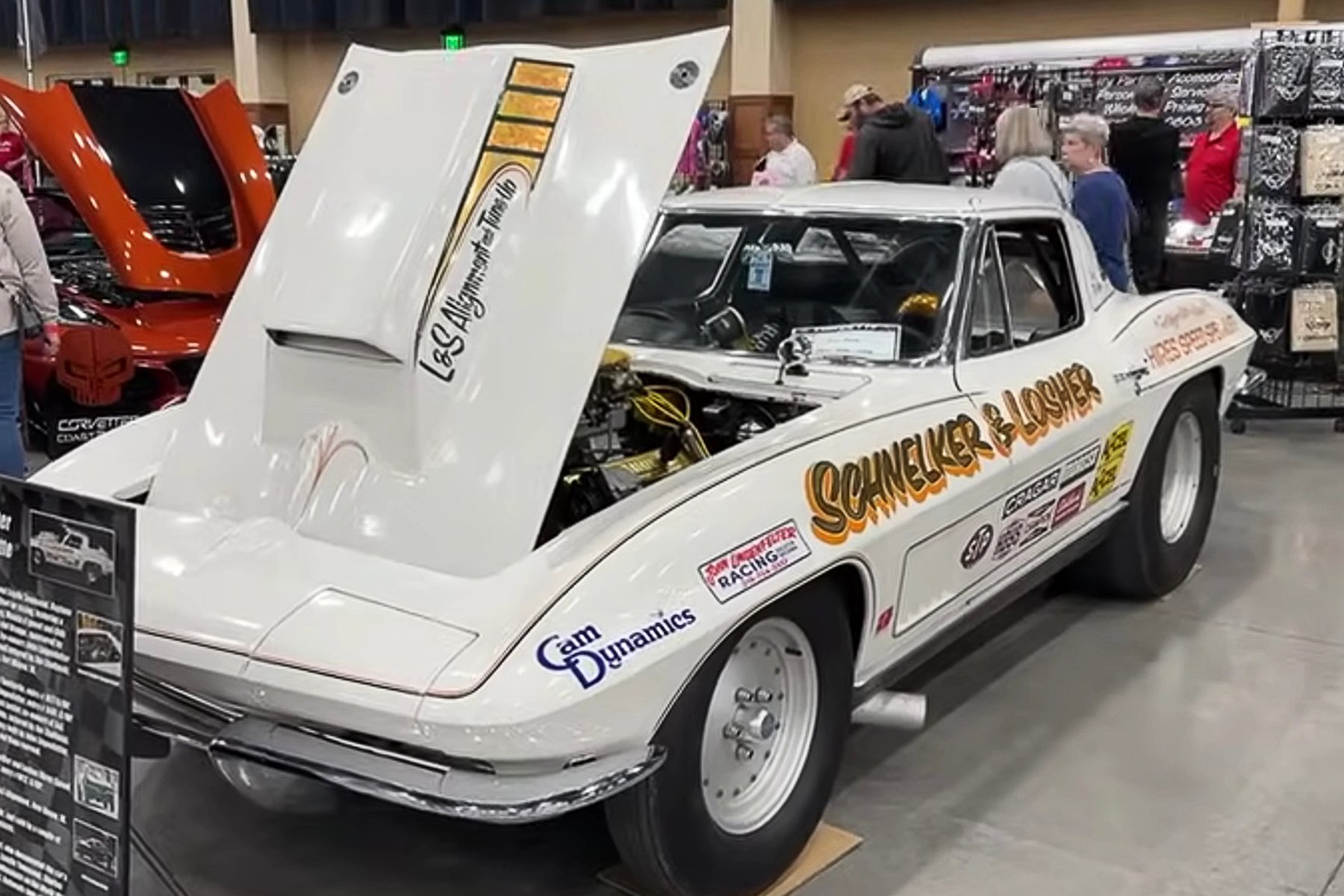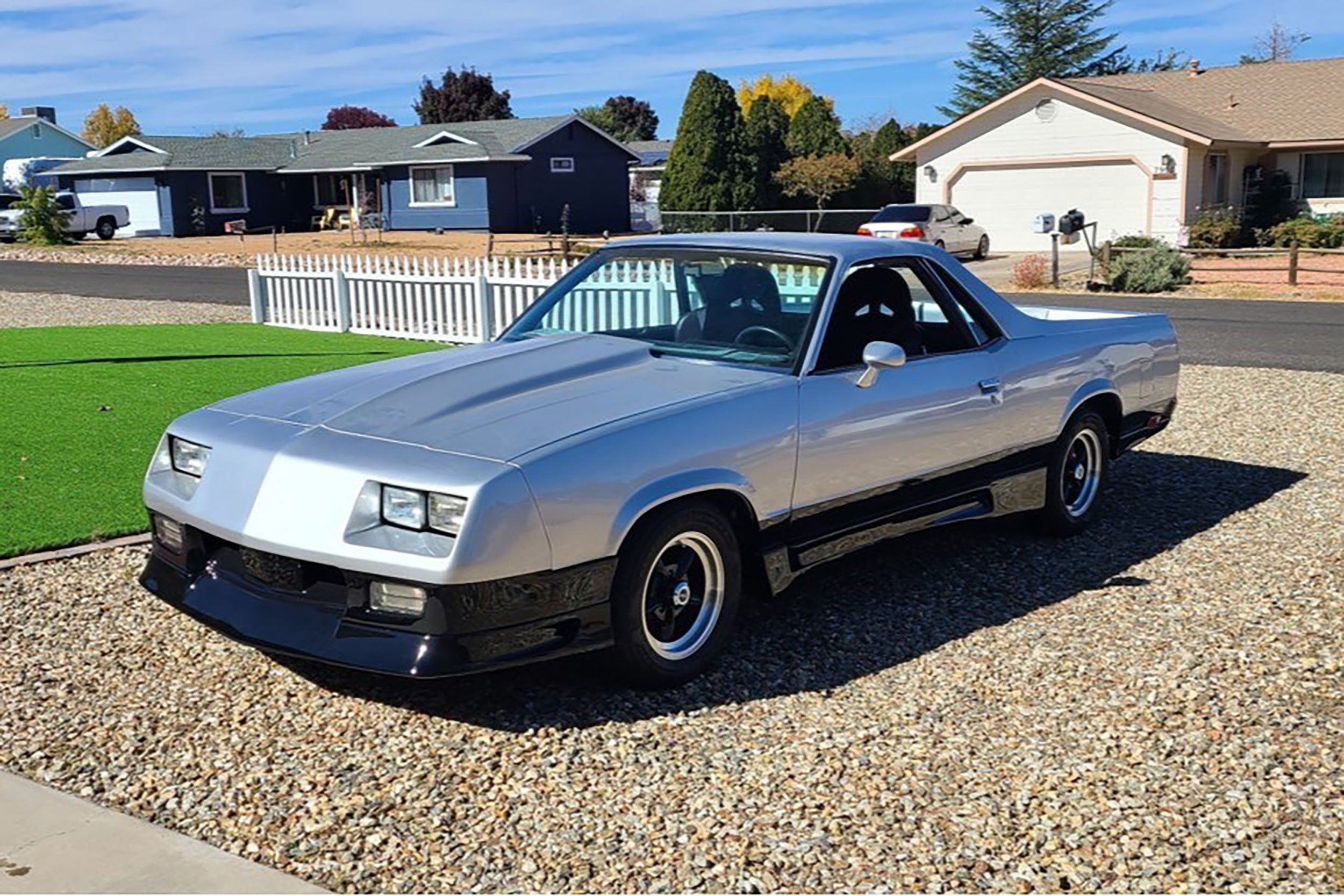Making its debut in 1967, the Chevrolet Camaro had become the measuring stick for horsepower by which all others were gauged over the next forty-five years. Ranging from 88 factory horsepower to slightly over 580-during the ebbs and flows of the economy and social issues of different eras–Camaro engines tell a lot about the United State’s business cycles.
We will take a look back at the first four generations of the Camaro engines in order to gauge the culture of the time, starting with the first-generation Camaro from 1967 to 1969. This was the peak of the musclecar era but only the start for the sporty coupe.
Each year saw different trim level models of the Camaro with each model offered with different engine options, as well as horsepower options. Its important to note that during this timeframe, horsepower numbers prior to 1972 were reported by the American carmakers as the gross SAE measurement of horsepower. This meant that the horsepower was measured from an engine running on a test stand with no air cleaner, accessories, or exhaust system connected.
In comparison with the way that horsepower is currently measured, these horsepower numbers seem inflated due to the lack of air and mechanical losses. Insurance companies also considered horsepower numbers when rating vehicles for insurance purposes. This led some car makers to hold back the numbers for insurance ratings and image reasons.
First Generation Camaro Engines
- 1967–1969 L26 230ci Inline 6 140 hp
- 1967–1969 L22 250ci Inline 6 155 hp
- 1967–1969 Z28 302 ci V8 290 hp
- 1967–1969 LF7 327ci V8 210 hp
- 1967–1968: L30 327ci V8 275 hp
- 1969: L14 307ci V8 200 hp
- 1969: LM1 350ci V8 255 hp
- 1969: L65 350ci 250 hp
- 1967–1969 L48 SS350 350ci V8 295 hp
- 1967–1969 L35 SS396 396ci V8 325 hp
- 1968–1969 L34 SS396 396ci V8 350 hp
- 1967–1969 L78 SS396 396ci V8 375 hp
- 1968–1969 L89 alum. head option for the L78
- 1969 COPO 9561/L72 427ci V8 425 hp
- 1969 COPO 9560/ZL1 427ci V8 430 hp
At the height of the musclecar era, Chevrolet rushed the new car to the market in an effort to take advantage of the sports coupe craze that was sweeping the nation. During the design phase, the engineers decided to use existing engines in the Chevrolet arsenal. Economy was a consideration but not the driving factor in the engine choices. The new Camaro was offered in a baseline model, SS trim, and the Z28 RPO code, each with a different horsepower range.
1967 Camaro Engines
The baseline Camaro could be had with one of six different engine packages, in either a straight six cylinder or V8 type. The base “entry-level” six cylinder Camaro was the RPO coded L26, a 230-cubic inch straight six rated at 140-horsepower. The 230ci six was a trusty economy engine for Chevrolet from its introduction. It was also used in the Chevelles and Chevy II/Nova from the early 1960s to 1970.
The baseline Camaro 230ci was equipped with a Rochester 1BV single barrel carburetor that was rated near 250cfm. The next year this engine was equipped with a different Air Injection Reactor (A.I.R.) and a different carburetor. Both versions were just good enough to supply power to the car while still achieving decent gas mileage.
An optional “stroked” version of the straight six (RPO L22) provided a higher horsepower option for the base L6 Camaros. Its 250-cubic inch displacement was rated at 155 horsepower and was also equipped with the Rochester 1BV single barrel carburetor. These engines continued to be used in Chevrolet products until 1984 when it was finally replaced in light trucks by the Vortex 4.3 liter V6.

The entry-level Camaro came equipped with an economical straight 6-cylinder engine. Photo from www.autotraderclassics.com
The baseline V8 Camaros could be had in the 327-cubic inch, 210 horsepower RPO LF7 topped with the Rochester “Dualjet” (2GV) two-barrel carburetor. This smaller V8 engine needed the 500 cfm carb for the larger displacement to provide good power while still achieving decent gas mileage. The 327 engine was introduced in 1962 and was the first of the 4.00-inch bore engines. Another 327 (RPO L30) was offered as a higher performance upgrade featuring a higher compression ratio (about 1.25 points higher) and a larger Quadrajet carburetor to make 275 hp at 4,800 rpm.
The V8 Camaros with optional air conditioning that utilized the Rochester 2GV carburetors had a hot idle compensator feature that supplied additional air to offset excessive fuel vaporization under higher underhood temperature conditions.
1967 SS & Z/28 Models
The SS trim Camaros were available with a 350-cubic inch V8 (L48) rated at 295 horsepower due in large part to the 750 cfm Quadrajet carburetor supplied with the engine. By 1969, this combination was used in almost every Chevrolet car line. The stock features included a hydraulic flat tappet camshaft and cast pistons with a compression ratio of 10.25:1.
The 750 cfm Quadrajet carburetor was also attached to the 396-cubic inch 325 horsepower V8 (L35) for the SS Models. This big-block Chevrolet had a 10.25:1 compression ratio, forged steel crankshaft (1968 and 1969 L35 came with the nodular iron crank), hydraulic lifters, oval port closed chambered cylinder heads, and two-bolt main caps in the block.

A great example of a 1967 396ci engine. Photo from www.barrett-jackson.com
The optional 396ci/375 hp engine (L78) came equipped with the Holley 4150 carburetor that was rated at 800 cfm. The 11:1 compression ratio combined with forged pop-top pistons, aluminum high-rise intake manifold, steel crankshaft, solid lifter camshaft, four-bolt main caps, and square port closed chambered heads offered a higher horsepower option.
The Z/28 was only offered in a coupe version with a 302ci/290 hp V8 topped with a 780 cfm Holley carb. These were dual feed carbs with vacuum secondaries. The 302-cubic inch engine was only available in the first generation Z-28 models. They were created specifically for the Trans Am racing rules where engine displacement was limited to 305-cubic inches. Using a four-inch bore 327 block with a 283 three-inch short-stroke forged steel crankshaft gave this combination a 302-cubic inch displacement.
The specially designed 302 also featured the solid lifter 30-30 Duntov camshaft, the larger 2.02/1.60-inch diameter valves, with the high-performance 327 double-hump cylinder heads, pushrod guide plates, hardened pushrods, and stiffer valve springs. A newly designed high-rise cast-aluminum dual-plane intake manifold with larger, smoother radius runners also debuted with the 302. The legendary Z/28 was born out of these high performance modifications in the 327 engine block that allowed for a higher revving engine.

The 1967 Z/28 302ci engine. Photo from www.barrett-jackson.com
Yenko Chevrolet in Canonsburg, Pennsylvania ordered several of the L-78 equipped Camaros that came from the factory with a 4.10 rearend gear and heavy duty suspension. Yenko swapped the 396ci factory engines with the Chevrolet Corvette L-72 427-cubic inch V8 in 104 of the Camaros. Yenko also installed a fiberglass hood and either a Muncie M21 or M22 transmission.
These Camaros were not allowed to race in factory classes at drag strips because they were not factory made by Chevrolet. As a response to this, Chevrolet would produce the COPO Camaro, or Central Office Production Order, in 1969.
1968 Model Engines
The engine options for the sophomore year were almost identical to the 1967 models with few exceptions. Another 396-cubic inch big-block engine rated at 350 horsepower was added as an option for the SS model. This L34 RPO engine was also capped with the 4MV Quadrajet 750 cfm carburetor.
The 302ci, 327ci, 350ci engine blocks underwent a crankshaft bearing diameter transformation for 1968 when the rod-journal size was increased from the 2.00-inch diameter “small-journal” to a 2.10-inch “large-journal” and the main-journal size was increased from 2.30-inches to 2.45-inches. The large-journal connecting rods were thicker and used 3/8-inch diameter cap-bolts to replace the small-journal’s 11/32-inch cap bolts.

A 1968 350ci engine mounted in a SS Camaro. Photo from www.barrett-jackson.com
With the switch to the large journal blocks, the crankshaft for the 302 was specially built of hardened forged 1053-steel and fitted with a high-rpm 8.00-in. diameter harmonic balancer. 1968 was the last year for factory headers with the 302ci engine with 1.750- inch primaries and 3.00-inch secondaries.
The 427-cubic inch big-block was not yet available as a Central Office Production Order but several dealers, such as Baldwin-Motion Chevrolet in Long Island, Dana Chevrolet in Los Angeles, Nickey Chevrolet in Chicago, Berger Chevrolet in Detroit and Yenko, offered the 427 as a dealer-installed replacement for the factory-supplied 396 engine.
1969 Model Engines
The 1969 Camaro carried over most of the previous year’s drivetrain with few exceptions.The Z28 RPO option was still available with the 302ci small-block backed by a Muncie four-speed transmission. It featured 11:1 compression, forged pistons, a forged steel crankshaft and connecting rods, solid lifter camshaft, and Holley 4150 carburetion on a dual-plane intake manifold. A dual four-barrel crossram intake manifold was available as a dealer-installed option.
The entry level L26 and L22 engines returned as the base six-cylinder options in 1969. The 327 (LF7) was the base V8 engine early in the 1969 model year but was replaced by the 307-cubic inch (L14) in January of 1969. The 307 later became well known for the fact that it had a low nickel content which made it soft. The engine had a reduced longevity rate making it unsuitable for rebuilding. Later versions of the 307 made during the emissions modified era produced just 115 hp which gave it one of the worst power to displacement ratings of all time.

A 1969 350ci engine in an SS Camaro convertible. Photo from www.barrett-jackson.com
The mildly popular 350-cubic inch (LM1) was the optional 350 engine in early 1969 but was replaced by the 350ci (L65) with two-barrel Rochester carburetor in January of 1969. The L65 optional 350-cubic inch displacement, higher horsepower V8 engine was available for the baseline Camaro. It was rated at 250 horsepower with the larger bore (1-1/2-inch) Rochester two-barrel 2GV “Dualjet” carburetor. This larger bore 2GV can be identified by its front mounted location on the carburetor housing. The smaller bore 2GV carburetors have the fuel inlet on the side of the housing.
The L34 and L35 big-block 396 engines were back along with the L78 option. The legendary L89 was an aluminum-head version of the L78 396, which was grossly underrated at 375 horsepower. These big-block engine options were coupled with a 3-row, 23-inch radiator for cooling.
Camaros with the “Dualjet” carburetors were equipped with 2-row, 21-inch core radiators. The small-block V8s that had the “Quadrajet” carburetors mounted on the engines were also outfitted with 2-row, 21-inch core radiators.
1969 COPO Camaros
Unique to the lineup was the factory-manufactured and installed special high performance 427 cubic-inch engines. The RPO L72 427 engines used a Holley 4150 series carb rated at 780 cfm and vacuum secondaries. The ZL1 version of the 427 engine used the 850 cfm Holley 4150 with mechanical secondaries.

A very rare 1969 ZL1 COPO engine. Photo from www.barrett-jackson.com
Using a solid lifter 427 big-block Chevy engine, Don Yenko ordered 201 of these Camaros through the COPO ordering process normally reserved for special fleet type vehicles like taxis and police vehicles. Yenko Chevrolet ordered all the high performance components available from the factory, added some additional goodies, and topped it off with a visual package at the Yenko dealership.
Most notably was the Yenko front and rear spoilers, cowl-induction hood, Yenko badging, and special striping on the cars. Other dealers began ordering the L72 engine package for an estimated total of 900 to 1,000 of these high performance cars with the L72 RPO option.
The other COPO available was labeled as the COPO 9560 which centered around an all-aluminum 427-cubic inch big block designed especially for drag racing. This became known as the ZL1 package and was the brainchild of drag racer Dick Harrell. The ZL1 engines were all hand-built in a clean room at the Tonawanda assembly plant prior to finding their way into Camaros, Corvettes, or sold individually to racers.

This 1969 L72 COPO engine is another one of the desirable and rare first generation engines . Photo from www.barrett-jackson.com
Rated at 430-horsepower from the factory, racers found that with a little tweaking and changing of the exhaust system, the ZL1 could produce over 500 hp. Fred Gibb Chevrolet in La Harpe, Illinois attempted to corner the market on these high powered engines. Gibb received 50 of the 69 ZL1 Camaros made but found it difficult to sell the cars due to their high price. Managing to sell only 13 of the 50 that he originally ordered, returning most of the cars back to Chevrolet to be redistributed to other high performance dealerships.
Summary of First Generation Camaro Engines
While the Camaro may have been rushed to market, the styling and engine options made it a favorite among consumers and racers. From 1967 through 1969, there were a total of 15 different engines offered in the Camaro platforms. The Z/28’s 302 cubic-inch mouse engine became a legend and the 396 cubic-inch rat engines are still sought after today. Things were looking bright for the GM engine platforms as the new decade approached. No one could predict the emission regulations and oil embargo issues that would change the engine combinations in the second-generation Camaro.




